
Students demonstrated how it is possible to live sustainably in existing buildings
The results of the international competition Active House Award have been announced.
The international competition Active House Award, organized by VELUX, has announced its winners. It brought a variety of proposals and suggestions that can serve as inspiration for the renovation of existing buildings.
The architectural competition Active House Award, held by VELUX since 2012, was declared international for the first time this year for students from Austria, Switzerland, the Czech Republic, and Slovakia. The theme “Rethink Suburbs” aimed to encourage students to reflect on the situation affecting many areas – built-up settlements and communities on the outskirts of large cities are surrounded by new developments, yet the houses in their centers are not optimally utilized. University students were to consider how to make the most of the available space in large houses within communities and propose an applicable renovation project in line with the standards of the so-called active house.
Students created a tailored design for an existing house
The goal for the competitors was to think about various possibilities for the use of existing residential structures. Therefore, the organizers decided to prepare real assignments for the students, collaborating with the town hall of the Austrian municipality Wolkersdorf im Weinviertel, located a few minutes from Vienna, and selected an older house. The students were provided with technical documentation and floor plans of the building as well as a broader urban context.
In March 2016, the first part of the competition, the so-called KICK OFF event, took place, where over 50 students from the four participating countries gathered in the municipality of Wolkersdorf im Weinviertel. The competition theme, along with lectures and case studies, was also introduced through a visit to the family house that was the subject of the assignment.
Their projects were subsequently to be based on the standards of the active house – meaning that its three core attributes are indoor environmental quality, environmental friendliness, and energy efficiency.
The results were announced to the students on October 20, 2016, during the festive award ceremony at the Wolkersdorf Castle in Wolkersdorf im Weinviertel. The winners were decided by a professional jury composed of:
- Dr. Peter Holzer, Institute of Building Research & Innovation (Austria)
- Ing. arch. Adam Gebrian, architect, theorist, and critique of architecture (Czech Republic)
- Ing. arch. Klára Bukolská, architect at VELUX (Czech Republic)
- Ing. arch. Štefan Polakovič, GutGut atelier (Slovakia)
- architect Martin Stuber, dipl. architect ETH/SIA REG A (Switzerland)
Participants emphasized the importance of the topic
This year's edition gained popularity primarily due to the topic presented. “I greatly appreciate the choice of theme – it's great that someone is looking into what seems insignificant at first glance. The entire concept is different. Students are here, in a small town near Vienna, where they saw a house from the 1970s and were asked if they could do something with it. Their proposals showed that even without drastic changes, suburban areas can be reconstructed and enriched,” commented jury member Adam Gebrian, a Czech architect and theorist. Among other things, he also has his own architecture program Gebrian versus on the internet television Stream.cz.
Swiss architect Martin Stuber added positive criticism: “The competition theme requires our attention. We are constantly expanding development and taking up new space, but we do not realize that there is less and less of it for us. Even though it did not initially seem attractive, it required a sense of detail and thoughtful solutions to the question of how we might behave in suburban communities.”
Anne Steindl, the mayor of Wolkersdorf im Weinviertel, was also very satisfied with the course of the competition: “I had no idea what to expect from the students' works, but the solutions presented really impressed me. It's great that VELUX focuses on such important questions too. I believe that we will be inspired by these ideas in the future.” The festive announcement of results was also attended by the owners of the family house that was the subject of the competition. They liked the projects and were surprised at how the students could change their house.
Czechs and Slovaks at the top spots
The most submissions came from the Czech Republic and Slovakia. “We were very pleased that university students from Slovakia and the Czech Republic had balanced participation and brought solutions that best responded to the competition assignment. The students proposed various concepts for dealing with life in existing structures, including how to better utilize their own buildings. It is necessary to highlight the comprehensive approach to solving the entire issue in the winning projects and thinking in contexts, where students were not only concerned with the house itself but also its surroundings,” says Klára Bukolská, architect at VELUX.
More information about the competition can be found at: http://activehouseaward.velux.com/
1st place: participation in the Daylight Symposium 2017 in Berlin + reward of €1800
Lukáš Kvaššay, Brno University of Technology, Faculty of Architecture
The jury unanimously agreed on the winner of the international round. The project itself is characterized by its simplicity, yet it is very attractive. It preserves the existing structure and is appropriately sized. Even though it offers two separate apartments, it feels like a family house. It fits perfectly into the environment.
“I really liked the theme. I wanted to try it out because I know I will encounter it in practice. As a Slovak studying in Brno, I have the opportunity to observe that these conditions affect both countries,” explains the winner, Lukáš Kvaššay.
2nd place: participation in the Daylight Symposium 2017 in Berlin + reward of €1000
Jana Zavřelová, Brno University of Technology, Faculty of Architecture
According to the jury, this project provides more quality to the existing residential unit and very surprisingly utilizes the cellar. It emphasizes the surrounding environment.
“We had the competition assignment as one of the options within one of our courses at school. It is a very current topic. I actually lived in such a place and it didn’t suit me. Next to my real experience, I was inspired by one of the books I read as part of this subject,” says the author, Jana Zavřelová.
3rd place: participation in the Daylight Symposium 2017 in Berlin + reward of €800
Júlia Giláňová, Slovak University of Technology in Bratislava, Faculty of Architecture
According to the jury, this project offers a comprehensive solution. The author's systematic approach to construction and energy utilization is noteworthy. The two apartments with barrier-free access and the possibility of assisted living were also positively rated.
“I tried to fully utilize the layout of the house and wanted to create two functions of the house that could operate under one roof and bring additional income to the family,” says Júlia Giláňová.
The international jury also awarded three prizes:
Prize No. 1 – Kryštof Foltýn and Norbert Obršál, Brno University of Technology, Faculty of Architecture
It is a very ambitious project with a play on space. The authors managed to integrate four apartments inside despite having reduced the external structure. Please note that the external parts of the building were also used, and the authors created a shared space.
Prize No. 2 – Anna Šlapáková, Slovak University of Technology in Bratislava, Faculty of Architecture
The solution of this project addresses a specific situation. It deals with empty space and creates a very strong identity for the object. The atypical dimensions offer an attractive view of the house from the front.
Prize No. 3 – Dominika Gáborová, Slovak University of Technology in Bratislava, Faculty of Architecture
The characteristic of this house is the simple transformation of the existing house. It is compact and energy-efficient. The front part of the house in combination with the courtyard is also noteworthy.
The architectural competition Active House Award, held by VELUX since 2012, was declared international for the first time this year for students from Austria, Switzerland, the Czech Republic, and Slovakia. The theme “Rethink Suburbs” aimed to encourage students to reflect on the situation affecting many areas – built-up settlements and communities on the outskirts of large cities are surrounded by new developments, yet the houses in their centers are not optimally utilized. University students were to consider how to make the most of the available space in large houses within communities and propose an applicable renovation project in line with the standards of the so-called active house.
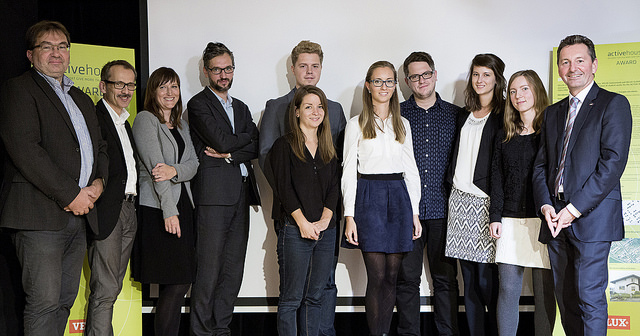 |
| Jury: Peter Holzer, Adam Gebrian, Klára Bukolská, Štefan Polakovič; winners: Lukáš Kvaššay, Jana Zavřelová, Júlia Giláňová, photographer: Patricia Weisskirchner |
Students created a tailored design for an existing house
The goal for the competitors was to think about various possibilities for the use of existing residential structures. Therefore, the organizers decided to prepare real assignments for the students, collaborating with the town hall of the Austrian municipality Wolkersdorf im Weinviertel, located a few minutes from Vienna, and selected an older house. The students were provided with technical documentation and floor plans of the building as well as a broader urban context.
In March 2016, the first part of the competition, the so-called KICK OFF event, took place, where over 50 students from the four participating countries gathered in the municipality of Wolkersdorf im Weinviertel. The competition theme, along with lectures and case studies, was also introduced through a visit to the family house that was the subject of the assignment.
Their projects were subsequently to be based on the standards of the active house – meaning that its three core attributes are indoor environmental quality, environmental friendliness, and energy efficiency.
The results were announced to the students on October 20, 2016, during the festive award ceremony at the Wolkersdorf Castle in Wolkersdorf im Weinviertel. The winners were decided by a professional jury composed of:
- Dr. Peter Holzer, Institute of Building Research & Innovation (Austria)
- Ing. arch. Adam Gebrian, architect, theorist, and critique of architecture (Czech Republic)
- Ing. arch. Klára Bukolská, architect at VELUX (Czech Republic)
- Ing. arch. Štefan Polakovič, GutGut atelier (Slovakia)
- architect Martin Stuber, dipl. architect ETH/SIA REG A (Switzerland)
Participants emphasized the importance of the topic
This year's edition gained popularity primarily due to the topic presented. “I greatly appreciate the choice of theme – it's great that someone is looking into what seems insignificant at first glance. The entire concept is different. Students are here, in a small town near Vienna, where they saw a house from the 1970s and were asked if they could do something with it. Their proposals showed that even without drastic changes, suburban areas can be reconstructed and enriched,” commented jury member Adam Gebrian, a Czech architect and theorist. Among other things, he also has his own architecture program Gebrian versus on the internet television Stream.cz.
Swiss architect Martin Stuber added positive criticism: “The competition theme requires our attention. We are constantly expanding development and taking up new space, but we do not realize that there is less and less of it for us. Even though it did not initially seem attractive, it required a sense of detail and thoughtful solutions to the question of how we might behave in suburban communities.”
Anne Steindl, the mayor of Wolkersdorf im Weinviertel, was also very satisfied with the course of the competition: “I had no idea what to expect from the students' works, but the solutions presented really impressed me. It's great that VELUX focuses on such important questions too. I believe that we will be inspired by these ideas in the future.” The festive announcement of results was also attended by the owners of the family house that was the subject of the competition. They liked the projects and were surprised at how the students could change their house.
Czechs and Slovaks at the top spots
The most submissions came from the Czech Republic and Slovakia. “We were very pleased that university students from Slovakia and the Czech Republic had balanced participation and brought solutions that best responded to the competition assignment. The students proposed various concepts for dealing with life in existing structures, including how to better utilize their own buildings. It is necessary to highlight the comprehensive approach to solving the entire issue in the winning projects and thinking in contexts, where students were not only concerned with the house itself but also its surroundings,” says Klára Bukolská, architect at VELUX.
More information about the competition can be found at: http://activehouseaward.velux.com/
1st place: participation in the Daylight Symposium 2017 in Berlin + reward of €1800
Lukáš Kvaššay, Brno University of Technology, Faculty of Architecture
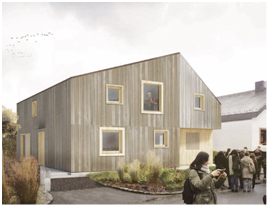 |
“I really liked the theme. I wanted to try it out because I know I will encounter it in practice. As a Slovak studying in Brno, I have the opportunity to observe that these conditions affect both countries,” explains the winner, Lukáš Kvaššay.
2nd place: participation in the Daylight Symposium 2017 in Berlin + reward of €1000
Jana Zavřelová, Brno University of Technology, Faculty of Architecture
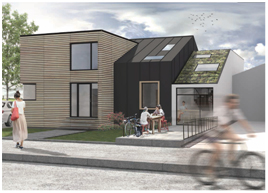 |
“We had the competition assignment as one of the options within one of our courses at school. It is a very current topic. I actually lived in such a place and it didn’t suit me. Next to my real experience, I was inspired by one of the books I read as part of this subject,” says the author, Jana Zavřelová.
3rd place: participation in the Daylight Symposium 2017 in Berlin + reward of €800
Júlia Giláňová, Slovak University of Technology in Bratislava, Faculty of Architecture
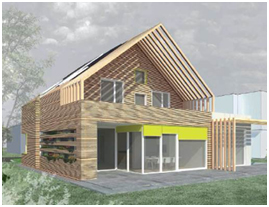 |
“I tried to fully utilize the layout of the house and wanted to create two functions of the house that could operate under one roof and bring additional income to the family,” says Júlia Giláňová.
The international jury also awarded three prizes:
Prize No. 1 – Kryštof Foltýn and Norbert Obršál, Brno University of Technology, Faculty of Architecture
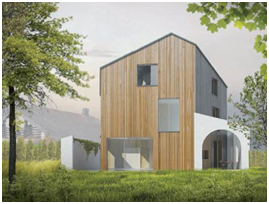 |
Prize No. 2 – Anna Šlapáková, Slovak University of Technology in Bratislava, Faculty of Architecture
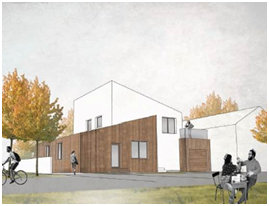 |
Prize No. 3 – Dominika Gáborová, Slovak University of Technology in Bratislava, Faculty of Architecture
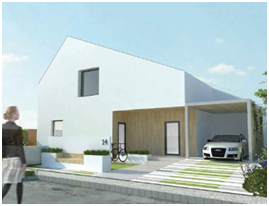 |
The English translation is powered by AI tool. Switch to Czech to view the original text source.
0 comments
add comment







